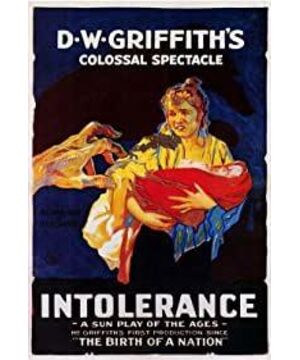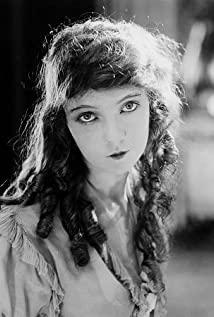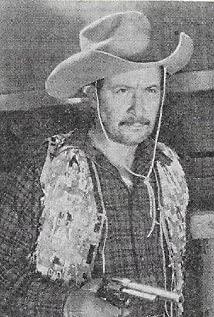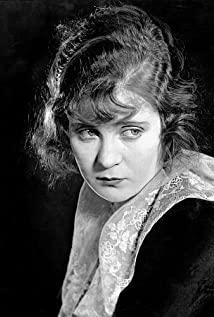The Story of the Movie Part 8
April 24, 2018
partisanship
Intolerance (1916)
DW Griffith
Many people have heard this joke: I hate two kinds of people, one is racist, and the other is black. This self-deprecating joke shows that some people are unknowingly hidden racists, and Griffith, the protagonist of this story, clearly knows what he thinks and expresses it in the film. Racism is "overt".
Griffith's "The Birth of a Nation" filmed in 1915 is more racist than the famous Chinese novel "Gone with the Wind". If it is said that "Gone with the Wind" and the film "Gone with the Wind", which was adapted from it, "black people have no separate value". In "The Birth of a Nation", black people are depicted as blind, ignorant, murdering, looting, and all-evil criminals.
It's a shame when we see something nefarious in great works of art. In the history of film, although this ideology is reactionary, it ranks among the classics because of its artistic creativity. The most easy to think of is "The Birth of a Nation" and the film released 20 years later, which may be the greatest in film history. The female director Riefenstahl, invited by Nazi Germany to shoot "Triumph of the Will" .
But who wasn't racist in the American South during the Griffith era? The history of cinema is not a potted plant that is sterilely cultivated from its era. Sadur's "World Cinema History" said: "Apart from the black problem, he (Griffith) is a humanitarian, eager to progress, with sincere ideals". When Griffith criticized the exploitation system of industrial society, it was inevitable that, like Margaret Mitchell, the author of Gone with the Wind, he had the common "nostalgia" in the American South before the Civil Rights Movement: slavery was an ideal Its disappearance is regrettable.
So in the selection of films in this section, I finally skipped "The Birth of a Nation" and chose "Party and Diversity" a year later. Despite the success of Griffith's "One", it was the highest-grossing U.S. film prior to "Gone with the Wind" (considering the devaluation of the dollar at the time of "Ran", some film historians believe that "One" is still the best after "Ran" came out. is the highest). The film ran for 15 years and earned Griffith millions of dollars in 1915 alone! A year later, Griffith put all his earnings into the filming of "Party to Fight Differing."
Such a huge investment (total production cost of 2 million US dollars) has created a movie that is far wider than the aforementioned "Cabylia" set. The depth of the Babylonian palace built for the movie is 1,600 meters. . The entire filming took 22 months, employed more than 60,000 people, and used nearly 100,000 meters of film. The fate of "Parties" after its release revealed that it was Griffith's crazy gamble for the film.
And to mention the "contradictory" "One", if you go all the way through the "Film Story" writing project, you will find that in fact Griffith invents almost nothing. The Leiden School learned "close-up", "head-to-back", learned "cross-cut" from Edwin Bout, and also took it from the director of "Cabylia" Pastelona "Push-pull shots," but the great thing about Griffith is that he was the first person in film history to put these techniques together in such a delicate and smooth way. From Griffith to mainstream cinema today, Both are continuations and collections of this method, in the sense that Godard said: The film begins with Griffith.
The adventure of "Party to Fight Differing" goes further. Griffith's ambition is to make a "solar drama that shines on all ages of mankind". The film is divided into four parts ABCD, namely: "Fall of Babylon", "Passion of Christ", "St. Bartholomew Massacre", "American Labor Conflict" four stories. The four stories are not told separately, but unfold simultaneously, linked together in a "cross-cut" fashion.
The well-known theatrical structure theory "Three Uniforms" requires that the creation of a drama maintains the consistency of time, place and action. That is, the story told in a play is required to take place within one day (one day and night), the location is in a scene, and the plot is subject to a theme. Sadur put it so well: Contrary to Trinity, He created a “Triple Law” of place, time and action.
What is special about the "cross-cut" of "Parties and Differing" is that it is not intended to show "simultaneous events" to create the dramatic tension of "last-minute rescues." Its ambition is to express the common theme of four different eras and different stories through the cross-editing of different meanings between different shots and a brand-new film narrative technique.
What subject? The four stories are actually narrated in completely different styles. "The Passion of Christ" is the least interesting. The style of painting and the means of expression are almost no different from those (again, EMI) biblical stories shot by EMI. "The Massacre of St. Bartholomew" is also a parody of "The Assassination of the Duke of Guise". The highlights of the four stories are "The Fall of Babylon" and "The Labor Conflict in America".
"The Fall of Babylon" is so beautiful and the scene is so grand. Griffith's greatness and innovation are once again on full display in this story. He "aerially photographed" the majestic scenes of Babylon through hot air balloons, and the shock brought by him is not surpassed by many blockbusters today. He and his cinematographer, Pietzel, also mounted the camera on a movable tower to shoot lift shots, a first in film history.
"America Has Fallen" is even more far-reaching, and his skillful alternate use of panoramas and close-ups in strike scenes marks the full maturity of montage in Griffith's hands . Later, the Soviet director Eisenstein made an in-depth study of this and wrote a monograph on his contribution. We will see the real shadow of Griffith in his masterpiece "Battleship Potemkin" and another Soviet director Pudovkin's "Mother"
The four stories are linked together by the recurring shot of Lillian Gish pushing the cradle, with lines from American poet Walt Whitman: "Today is like yesterday, and the world is full of changes. The cradle shakes, Bringing the same passions, the same joys and sorrows to mankind.” There is nothing new under the sun, Griffith said he wanted to express: a same humanity in different eras, human "intolerance", or "inability to love."
It's a coincidence, too, considering that death happens in every story (and in two stories there are even countless deaths). We've also repeated Godard's words many times: "The movie starts with Griffith". And Godard's cinematographer Raoul Coutard, who died the previous year, said when summing up Godard's films: "Jean Luc's films have only two themes: death and the futility of love". Yes, "death", "love's incompetence" or "love's futility", no matter how the film format changes, there is nothing new under the sun, and we are always tirelessly concerned with these complex, sad, timeless stories around human nature. .
But we only realized all this when Griffith became "Griffith" in the history of cinema. The avant-garde approach to storytelling in "Party to Fight Differing" suffered a box-office flop in 1916, leaving Griffith bankrupt and going into debt for the rest of his life. He, like many of the early film pioneers we've mentioned earlier, came to a sad ending after a brave end to great cinematic adventures. Fortunately, Lillian Gish, the heroine of the film, gave Griffith great help in his down-and-out old age, and took care of him until his death.
There's nothing new under the sun, and this phrase was also appropriate after Griffith appeared. Because after the movie "Begins with Griffith", mainstream movies have used his method for more than 100 years. "Party to Divide" was Griffith's zenith, and it was the culmination of cinema 100 years ago.
Section 2 The Narrative Function of Early Cinema (1903-1918)
1 Cabiria (1914) by Giovanni Pastorona
2 Intolerance (1916), D.W. Griffith
3 The Ghostly Carriage Körkarlen (1921), Victor Shestrom
4 The Witch Häxan (1922), Benjamin Christensen
Dong Feiyu's Image View WeChat: hickokjeans
View more about Intolerance reviews











